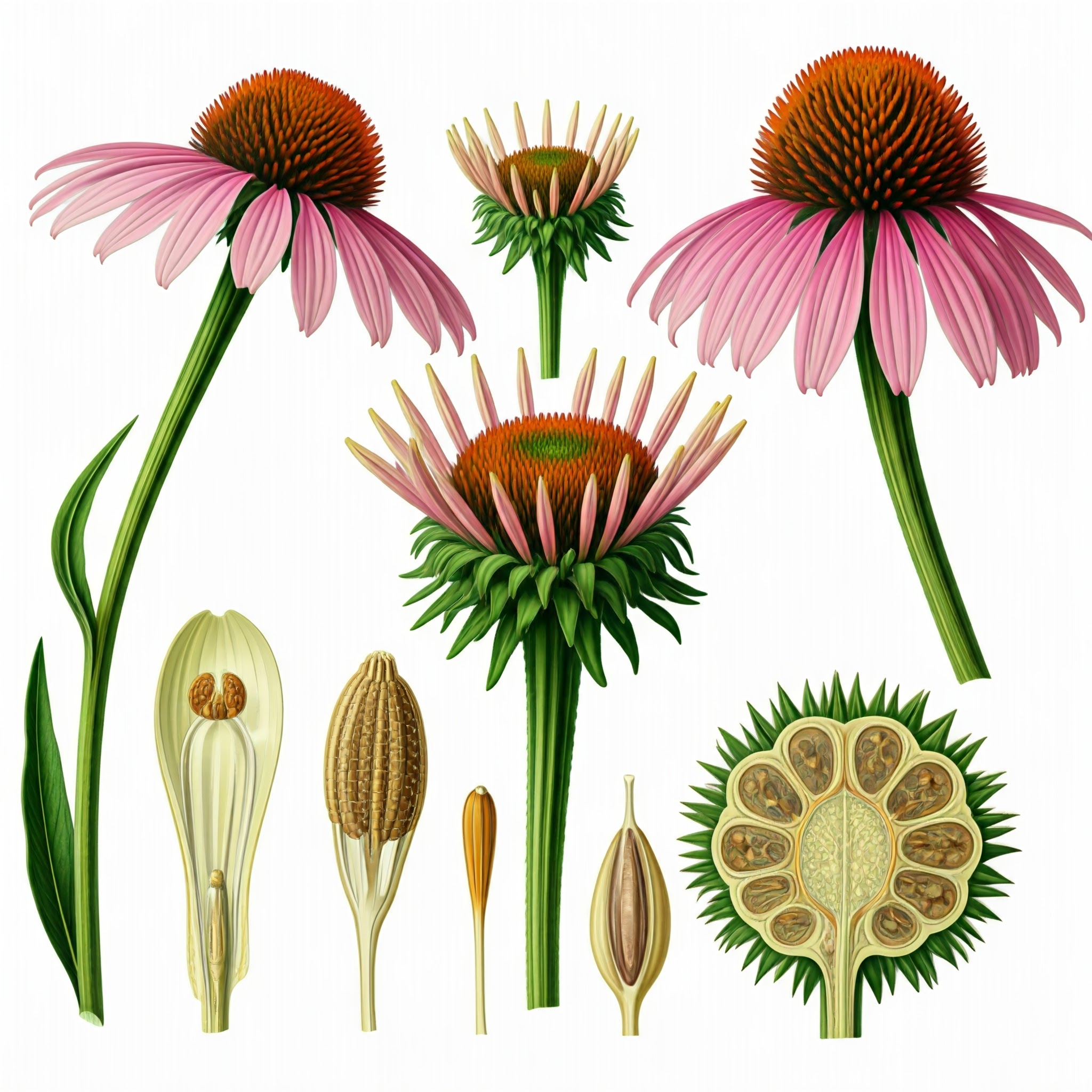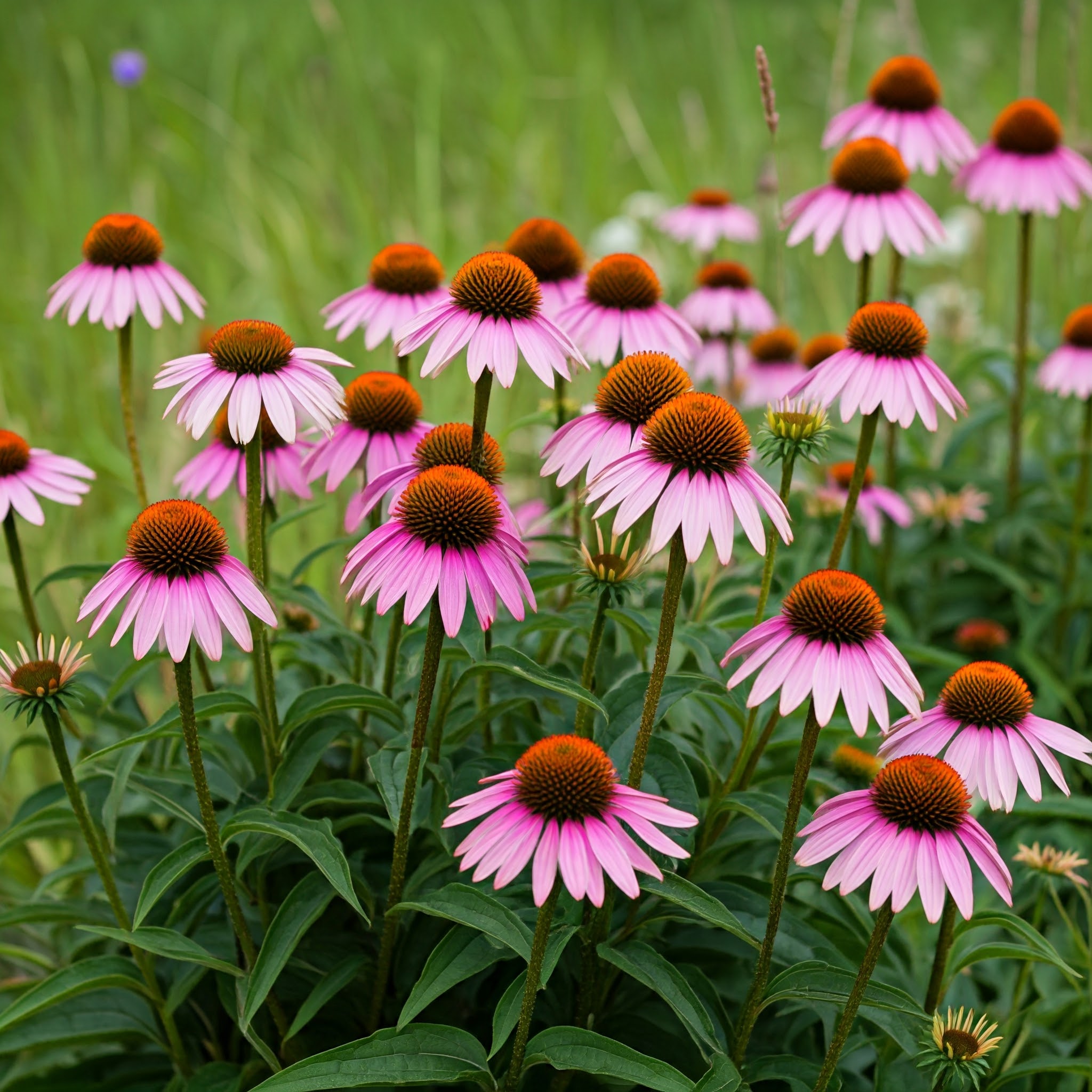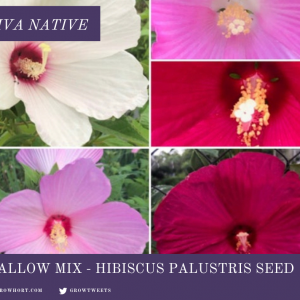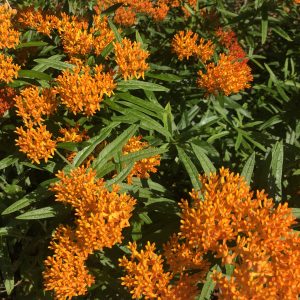Purple Coneflower Echinacea Seeds – Native Perennial Wildflower
Bring vibrant color and essential pollinator support to your garden with Purple Coneflower Echinacea Seeds. Known as one of the top ten native pollinator plants, this iconic wildflower thrives in both garden settings and meadow landscapes. Perfect for butterfly gardens, cottage borders, or prairie-inspired planting, Echinacea is a must-have for eco-friendly gardeners.
Key Features:
Scientific Name: Echinacea spp.
Common Names: Purple Coneflower, Coneflower
Height: 2–5 feet (depending on species)
Width: 1–2 feet; forms beautiful drifts when mass planted
Zones: 3–9
Light: Full sun; tolerates partial shade in hot summers
Soil: Prefers free-draining, poor to moderately fertile soils
Flowering Season: Summer to Fall
Seed Quantity: 25+ seeds per pack
Why Choose Purple Coneflower?
Pollinator Powerhouse: A favorite among bees, butterflies, and other pollinators.
Drought Tolerant: Thrives in dry conditions once established.
Long Blooming Season: Single flowers appear in summer and persist into fall, with spiny cones providing winter seeds for birds.
Versatility: Ideal for borders, meadows, prairies, and containers.
Planting and Growing Instructions:
Direct Sowing:
Best Time: Fall or early spring.
Method: Sow seeds directly into a weed-free seedbed. Lightly cover with soil and water thoroughly, and protect from winter weather if needed.
Indoor Sowing:
Cold Stratification: Refrigerate seeds for 4–12 weeks to break dormancy.
Start Anytime: Use a windowsill, cold frame, or grow lights. Avoid overwatering and ensure good drainage.
Transplanting:
Pot seedlings once they’re large enough to handle. Gradually acclimate them to outdoor conditions before planting them in their permanent location.
Where to Plant?
Garden Borders: Adds height and vibrant color to sunny borders.
Wildflower Meadows: Blends beautifully with bee balm, goldenrod, and asters for a pollinator-friendly habitat.
Cottage Gardens: A cheerful addition to any informal planting scheme.
Eco-Friendly Gardening:
Echinacea is a cornerstone of native plant gardening, supporting biodiversity, providing seeds for birds, and contributing to balanced ecosystems. By planting Purple Coneflower, you’re helping combat habitat loss and promoting environmental sustainability.
Seed Count & Shipping:
Average Pack Size: 25+ seeds.
Shipping Perks: Free tracked shipping on orders over $20.
Make a Difference:
Your garden, no matter its size, can play a vital role in protecting native wildlife and plants. Swap ornamental hybrids for impactful native species like Purple Coneflower, and join the global movement to restore biodiversity and support pollinators.
Let’s grow a better world, one flower at a time!











Reviews
There are no reviews yet.